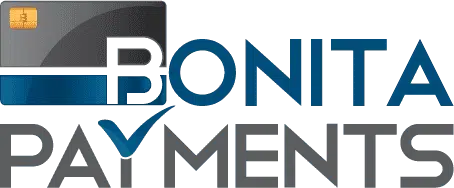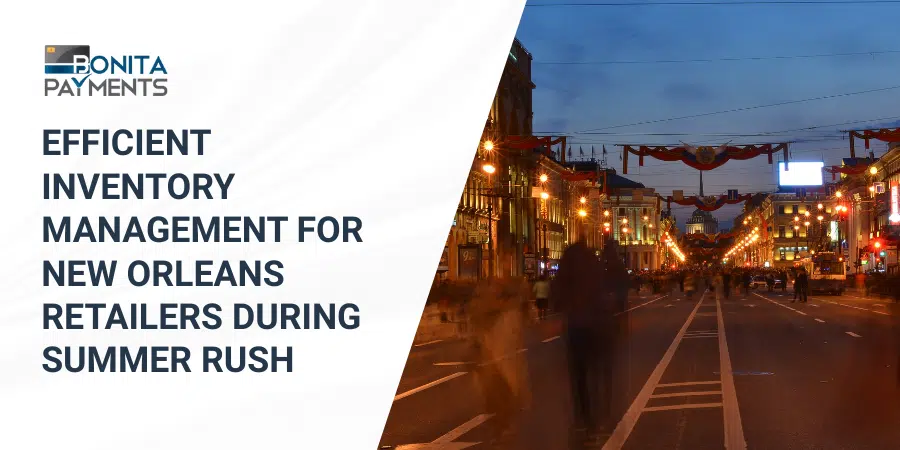Restaurant point-of-sale (POS) systems are a critical component of running a successful restaurant business. A POS system is a combination of software and hardware that allows restaurants to manage their orders, payments, inventory, and customer data. By investing in the right POS system, restaurant owners and managers can improve their business operations, enhance customer experiences, and increase revenue.
Choosing the right POS system for a restaurant is crucial. The system should be able to handle the specific needs of the restaurant, such as table management, kitchen display, inventory tracking, and delivery features. In addition, it should be easy to use, reliable, and affordable.
To help restaurant owners and managers make informed decisions when selecting a POS system, we have outlined the top features to look for in a quick service restaurant POS system. These features include inventory management, advanced reporting, delivery features, payment processing, customer management, hardware and software compatibility, and third-party integrations. By considering these features, restaurant owners and managers can choose a POS system that meets their business needs and enhances their overall operations.
POS System Features for Inventory Management
One of the most important features to look for in a restaurant POS system is inventory management. This feature allows restaurant owners and managers to keep track of their stock levels, orders, and supplies in real-time, reducing waste and preventing shortages.
Inventory management is critical in a restaurant because it enables the business to operate more efficiently and cost-effectively. By tracking inventory levels, restaurant owners and managers can optimize their ordering and stocking processes, minimizing waste and saving money on supplies.
The top inventory management features to look for in a restaurant POS system include the ability to set reorder points, manage ingredient costs, and track inventory in real-time. In addition, the system should have an automated ordering feature that allows restaurants to place orders with suppliers automatically, reducing the time and effort required to manage inventory.
Advanced Reporting and Sales Reports
In addition to inventory management, advanced reporting and sales reports are also crucial features to look for in a restaurant POS system. These features allow restaurant owners and managers to track sales, analyze data, and make informed decisions about their business operations.
Advanced reporting and sales reports provide insights into customer behavior, menu performance, and staff productivity. This information can help restaurants optimize their menus, improve customer service, and increase revenue.
Tracking sales and analyzing data is particularly important for restaurants that are looking to increase their profitability and efficiency. By using a restaurant POS system with advanced reporting and sales reports, restaurant owners and managers can identify trends and opportunities, and make data-driven decisions about their business.
The top reporting and sales tracking features to look for in a restaurant POS system include real-time sales tracking, customizable reports, and integration with third-party analytics tools. In addition, the system should provide insights into key performance indicators such as average check size, table turnover, and menu item popularity.
Delivery Features
Delivery features are becoming increasingly important in the restaurant industry, particularly during the COVID-19 pandemic, as more customers are opting for delivery and takeout options. The importance of delivery features in a restaurant POS system cannot be overstated, especially during the pandemic. With many restaurants relying on delivery and takeout orders to stay afloat, having a robust delivery system can make all the difference in terms of profitability and customer satisfaction. A restaurant POS system with delivery features can help restaurants manage their delivery orders, drivers, and payments, ensuring a smooth and efficient delivery process.
Delivery features in a restaurant POS system typically include order tracking, driver management, and integration with third-party delivery services. These features can help restaurants optimize their delivery operations, reduce delivery times, and improve customer satisfaction.
The top delivery features to look for in a restaurant POS system include the ability to track delivery orders in real-time, automatic dispatching of drivers, and integration with popular delivery platforms such as Uber Eats and Grubhub.
Payment Processing Features
Payment processing features are a crucial component of any restaurant POS system. These features allow restaurants to accept various forms of payment, such as credit cards, debit cards, and mobile payments, and process transactions quickly and securely.
Payment processing features in a restaurant POS system typically include support for EMV cards, contactless payments, and dual pricing for tips and discounts. Additionally, the system should be able to process payments in offline mode, ensuring that restaurants can continue to accept payments even when the internet is down. With customers expecting a variety of payment options, restaurants need to have a POS system that can handle multiple forms of payment quickly and securely.
The top payment processing features to look for in a restaurant POS system include EMV card support, contactless payments, offline mode processing, and integration with popular payment processors such as Square and Stripe. By choosing a POS system with robust payment processing features, restaurant owners and managers can ensure that their customers can pay quickly and easily, improving overall customer satisfaction.
Customer Management Features
Customer management features are an essential aspect of any restaurant POS system, enabling restaurants to build lasting relationships with their customers. These features allow restaurants to manage customer information, preferences, and feedback, which can help them provide better service and personalized experiences.
Customer management features in a restaurant POS system typically include the ability to track customer orders, loyalty programs, and integration with third-party customer management platforms. These features can help restaurants improve customer retention, increase revenue, and build a loyal customer base.
The top customer management features to look for in a restaurant POS system include the ability to track customer orders, personalized marketing and promotions, and integration with popular customer management platforms such as Mailchimp and Constant Contact. By choosing a POS system with robust customer management features, restaurant owners and managers can build a loyal customer base and increase revenue over time.
Hardware and Software Features
In addition to the software features, the hardware and software compatibility is a critical consideration when selecting a restaurant POS system. The hardware and software should work together seamlessly to provide a user-friendly and efficient experience.
Examples of hardware and software features in a restaurant POS system
Hardware features include devices such as receipt printers, card readers, cash drawers, and POS terminals. These components should be reliable, durable, and easy to use. The software features include the operating system and the software application that runs the POS system. The software should be compatible with the hardware and provide a user-friendly interface.
Importance of hardware and software compatibility in a restaurant POS system
Hardware and software compatibility is essential to ensure the smooth operation of a restaurant POS system. The hardware and software should be compatible to reduce the risk of downtime and prevent any potential errors that could impact the efficiency of the restaurant operations. Furthermore, the hardware and software should be regularly updated to ensure compatibility with the latest technologies and ensure that the system is always functioning at its best.
Top hardware and software features to look for in a restaurant POS system
When selecting a restaurant POS system, it is essential to look for hardware and software features that are reliable and provide a seamless experience. Some key features to look for include compatibility with EMV card and contactless payments, the ability to operate in offline mode, and compatibility with a variety of devices, such as iPads and smartphones. Additionally, the software should be intuitive and easy to navigate, with a simple interface that streamlines restaurant operations.
Optimizing Your Restaurant POS System: Essential Features to Consider
When considering a POS system, it’s important to look for features that can help streamline your operations, increase efficiency, and ultimately boost your restaurant’s profitability. Whether you operate a full-service restaurant, food truck, or cloud kitchen, finding a POS system with the right features can help you take your business to the next level.
In this section, we will discuss the top features to consider when choosing a restaurant POS system. From POS software to hardware and third-party integrations, these features are essential to help you streamline your operations and boost your restaurant’s efficiency and profitability.
POS Software Features
When it comes to selecting the right POS software for your restaurant, it’s important to choose a system that can cater to your specific needs. Different restaurant types require different POS features, and it’s important to find a system that can handle all of your restaurant’s functions. Some top features to consider include:
- Menu Management: A good restaurant POS system should allow you to easily update and manage your menu items. This feature enables you to make changes to your menu in real-time and keep up with changing trends.
- Employee Management: Employee scheduling and management is essential to ensure smooth restaurant operations. A restaurant POS system should offer features to manage employee schedules, payroll, and performance evaluations.
- Customer Loyalty: Building customer loyalty is critical for the long-term success of your restaurant. A POS system with built-in loyalty programs can help you incentivize customers to keep coming back to your restaurant.
- Cloud Reporting: Cloud-based reporting is an essential feature for any modern restaurant. It allows you to access real-time data about your business performance and make informed decisions accordingly.
POS Hardware Features
The hardware components of a restaurant POS system are equally important as the software. A reliable and efficient POS hardware system is necessary to ensure your restaurant’s operations run smoothly. Some top hardware features to consider include:
- iPad POS: An iPad POS system offers a cost-effective and flexible solution for restaurants of any size. These systems are easy to use and require minimal setup time.
- Kitchen Display System: A kitchen display system allows restaurant staff to view incoming orders and track order status in real-time. This feature can help improve kitchen efficiency and order accuracy.
- Flexible Payments: A restaurant POS system should offer a variety of payment options to cater to the needs of your customers. This can include contactless payments, mobile payments, and EMV card readers.
Third-Party Integrations
A restaurant POS system’s third-party integrations refer to its ability to interact with external services or applications, such as online ordering platforms, loyalty programs, and accounting software. These integrations can provide restaurants with added functionalities and streamline their operations.
Third-party integrations have become increasingly important in the restaurant industry as customers have come to expect more convenient ways to order food and earn rewards. Integrating online ordering platforms with a POS system allows restaurants to manage orders from different sources in one place, reducing the risk of errors and improving efficiency. Integrating a loyalty program with a POS system enables restaurants to reward customers for their purchases, which can encourage repeat business.
In addition, third-party integrations can help with accounting and financial management. Integrating accounting software with a POS system can automate bookkeeping tasks, such as tracking sales and expenses, generating financial reports, and processing payroll. This can save restaurants time and reduce the risk of errors, which is especially important for small businesses with limited resources.
Integrating with third-party services can help restaurants extend their capabilities beyond the basic POS features. Some top third-party integrations to consider include QR Codes, which have become increasingly popular in the restaurant industry. They enable customers to scan a code on their mobile devices to access the restaurant menu and place orders.
Conclusion
Choosing the right POS system for a restaurant can make a huge difference in its overall success. When selecting a quick service restaurant POS system, it’s important to consider the key features that can help streamline operations, increase efficiency, and improve customer satisfaction. These features include order management, inventory management, advanced reporting and sales tracking, delivery features, payment processing, customer management, hardware and software compatibility, and third-party integrations.
It’s essential to understand the importance of each of these features and their role in enhancing your restaurant’s operations. By investing in a POS system that offers these features, you can better manage your business and keep up with the ever-changing demands of the restaurant industry.






